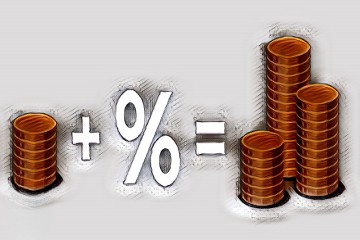Lesson 6: Simple and Compound Interest
Understanding the concept of simple and compound interest, particularly the latter, is a crucial aspect of financial literacy. In this lesson, we will delve into the meaning of interest, explore the differences between simple interest and compound interest, and uncover the incredible power of compounding. By grasping these concepts, you will gain valuable insights into how interest works and how it can significantly impact your financial journey.
What is Interest?
Interest is essentially the cost of borrowing money or the compensation for lending money. It is the extra amount paid or earned on top of the principal (the initial amount) involved in a financial transaction. Whether you are a borrower or a saver, interest plays a vital role in shaping your financial decisions.
Simple Interest:
Simple interest is the most basic form of interest calculation. It is calculated only on the principal amount (i.e. the amount invested or borrowed) and does not take into account any accumulated interest.
The formula for simple interest is straightforward:
Simple Interest = Principal x Interest Rate x Time
To illustrate simple interest, let's consider an example:
Imagine you borrow $1,000 from a friend at a simple interest rate of 5% per year for a period of two years.
Using the simple interest formula, the interest amount would be:
Interest = $1,000 x 0.05 x 2 = $100
Therefore, at the end of two years, you would need to repay a total of $1,100 ($1,000 principal + $100 in interest).
Compound Interest:
One of the most powerful concepts in finance is compound interest. The compound interest calculation takes into account not only the principal and the interest rate but also the accumulated interest over time. This means that the interest earned or charged is added to the principal, and subsequent interest calculations are based on the new total. To illustrate this, let's consider an example: Imagine you invest $1,000 in a savings account with a 10% annual interest rate compounded annually. After one year, your investment would grow to $1,100 ($1,000 + $100 in interest). Now, if you leave that money untouched and let it compound for another year, your investment would grow to $1,210 ($1,100 + $110 in interest). Over time, the interest keeps compounding, accelerating the growth of your investment.
Now, let's dive deeper into the concept of compounding and explore the growth potential over longer periods:
Imagine a young individual named Sam, who starts saving and investing at the age of 25. Sam decides to save $100 each month and invest it in a long-term investment vehicle with an annual interest rate of 10%. Let's see how Sam's investment grows over time:
-- In 20 Years: After 20 years of consistent saving and investing, Sam's monthly contributions of $100 would amount to a total investment of $24,000 ($100 x 12 months x 20 years). With an annual interest rate of 10%, the power of compounding would result in a remarkable total of approximately $85,470.
-- In 30 Years: If Sam continues the same savings and investment strategy for 30 years, the total investment would reach $36,000 ($100 x 12 months x 30 years). With an annual interest rate of 10%, the power of compounding would lead to an astonishing amount of approximately $226,380.
-- In 40 Years: For an even longer time horizon, let's explore what happens when Sam saves and invests for 40 years. The total investment would amount to $48,000 ($100 x 12 months x 40 years). With an annual interest rate of 10%, the power of compounding would result in a staggering amount of approximately $632,140.
As Sam's story demonstrates, the power of compounding can transform small monthly contributions into significant amounts over time. By starting early and maintaining a disciplined savings and investment approach, Sam is able to reap the benefits of long-term financial growth. By leveraging the concept of compounding, like Sam, you too can accelerate the growth of your investments and savings over time. Whether you are saving for a specific goal or investing for long-term wealth accumulation, harnessing the power of interest can make a significant difference in your financial well-being.

@ayuecosystem #kids #youngadults #BankingBasics #FinancialLiteracy #InterestExplained #SimpleInterest #CompoundInterest #PowerOfCompounding #FinancialLiteracy #InterestRates #FinancialEducation #InvestingBasics #Savings #FinancialGrowth #InvestmentStrategies #FinancialPlanning #GrowingYourMoney #LongTermInvesting #WealthBuilding #FinancialEmpowerment #CompoundInterestExamples #SimpleInterestExamples #InvestmentGoals #FinancialJourney